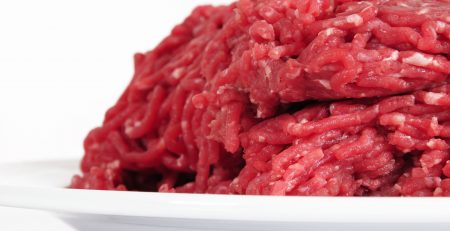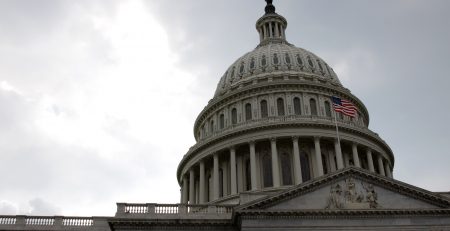The Hammer Falls
Tough talks on trade continue to escalate tensions between the U.S. and China as both countries threaten to impose more tariffs. In early April, Beijing slapped a 25% tariff on pork and a 15% tariff on apples, almonds and other goods. Soybeans, cotton and beef are some of the products next in line to take hits from Chinese tariffs that could go into effect after May 11. At that point, the administration has up to 180 days to make a final decision.
The stakes are high. A 25% tariff on soybeans, for example, would cost the U.S. economy about $3 billion annually, estimates Wally Tyner, Purdue University agricultural economist. “Interestingly, China would lose about the same amount,” he adds.
The threat of $150 billion-worth of tariffs on Chinese goods is a stick the Trump administration is using to crack down on intellectual property theft by the country.
“He’s threatening to light American agriculture on fire. Let’s absolutely take on Chinese bad behavior, but with a plan that punishes them instead of us. This is the dumbest possible way to do this,” said Ben Sasse, R-Neb., in a prepared statement.
Tyner agrees and says the answer to the problem of intellectual property theft is for Trump to go after China in the international courts.
“You have to play the game the way it’s designed to be played,” Tyner says. “You don’t cure theft by stealing from your own people, which is what we’d be doing if we impose the tariffs.”
Short-term, Tyner says the tariff would cause little harm because the U.S. exports few, if any, soybeans to China this time of year. However, if a tariff is imposed and stays in place for three or more years, Tyner anticipates Brazil would seize the market opportunity and ramp soybean production up by as much as 9 million acres beyond its current 82.2 million acres.
“That would lead to Brazil permanently displacing some U.S. soybeans,” Tyner says.
To soften the blow, the U.S. would likely turn to the export markets Brazil cast aside in its rush to court China. But those markets would not be able to totally replace the lost Chinese markets.
“U.S. global exports of soybeans would still fall 37%,” Tyner says.
If a trade war does ramp up, Illinois farmer Austin Rincker is hopeful China would eventually return as a U.S. soybean customer.
“We have a very good infrastructure compared to the rest of the world and have built a good relationship with the Chinese. I think they’d eventually be back,” says Rincker, who raises corn, soybeans and beef cattle near Moweaqua, just south of Decatur.
Rincker, who is serving his second term as chairman of the marketing committee for the Illinois Soybean Board, bases part of that expectation on what he observed when visiting Shanghai in 2015.
“The populations of Illinois, Indiana, Iowa and half of Nebraska would fit into that city,” he says. “I’d never seen a population density like that. It helped me understand what the middle class looks like there.”
Some members of the agricultural industry are less optimistic.
“Don’t say China can’t do this. They surely can and they’ve proven they can,” Tom Sleight, president and CEO of the U.S. Grains Council, told Farm Journal reporter Betsy Jibben with “AgDay.” “We’ve seen this happen in feed grains. This can potentially happen in protein meal as well.”
Indeed, China’s commerce ministry says, “China has very detailed countermeasures” and will “fight at any cost” to defend its economic interests.
There are also other ways China could counter U.S. tariffs—and undermine Trump in the process. John Payne, publisher of “This Week In Grain” told Jibben China has signaled a plan to buy 100 million metric tons of soybeans this next marketing year. “If [China] goes with that number, the only way in my opinion they can get that number out of South America is for South America to import beans from the U.S.”
“China’s not stupid,” Tyner adds.
He points to China’s calculated decision to go after Trump’s voter base in rural America. Consider the pork tariff. The U.S. exported $1.1 billion of pork to China in 2017 and is considered the third-largest customer in terms of value.
“The U.S. has 550,000 jobs in the pork industry, and 110,000 of those jobs are tied to exports. There’s a lot at stake here and we have been delivering that message to the administration, and we’ll continue to do that,” says Jim Munroe, spokesman for the National Pork Producers Council.
A 25% soybean tariff could cripple farmers’ support for Trump, which is significant. According to an Associated Press (AP) review of election data, the president won 89% of all soybean-producing counties. “On average, two out of three voters supported Trump in those counties,” the AP reports.
Trump’s administration is evaluating how it can potentially shield already-financially stressed farmers from further loss. One option that Trump and Agriculture Secretary Sonny Perdue are considering is a plan to pay $15.3 billion in federal funds to those affected by the tariffs.
At press time, the countdown to May was on and none of the existing or threatened tariffs had been resolved.
“I frankly don’t think the president understands what he’s getting into,” Tyner says. “Maybe he does, and this will all be negotiated away. If it isn’t, we all lose.”
Despite the initial blows, the two countries still have time to negotiate an agreement that would neither cripple U.S. farmers’ already tenuous market opportunities nor hurt China’s burgeoning middle class. It’s the outcome Rincker hopes for as he readies for planting.
“I’m for free trade,” says the 29-year-old farmer. “We’ve invested a lot of dollars in meeting the needs of the Chinese and trying to grow that market, and we want it to continue. It’s a $14 billion industry for us.”
Like almost half of the farmers who responded to a recent Farm Journal Pulse, Rincker is unsettled. “But we’re far enough into spring and with our fertilizer [program] that we will maintain our rotation,” he says.
It’s the same scenario most U.S. farmers face.
Content within the Farm Journal Forum is the property of Farm Journal, Inc and protected by copyright.This article was first published on https://www.fjfnews.com.









